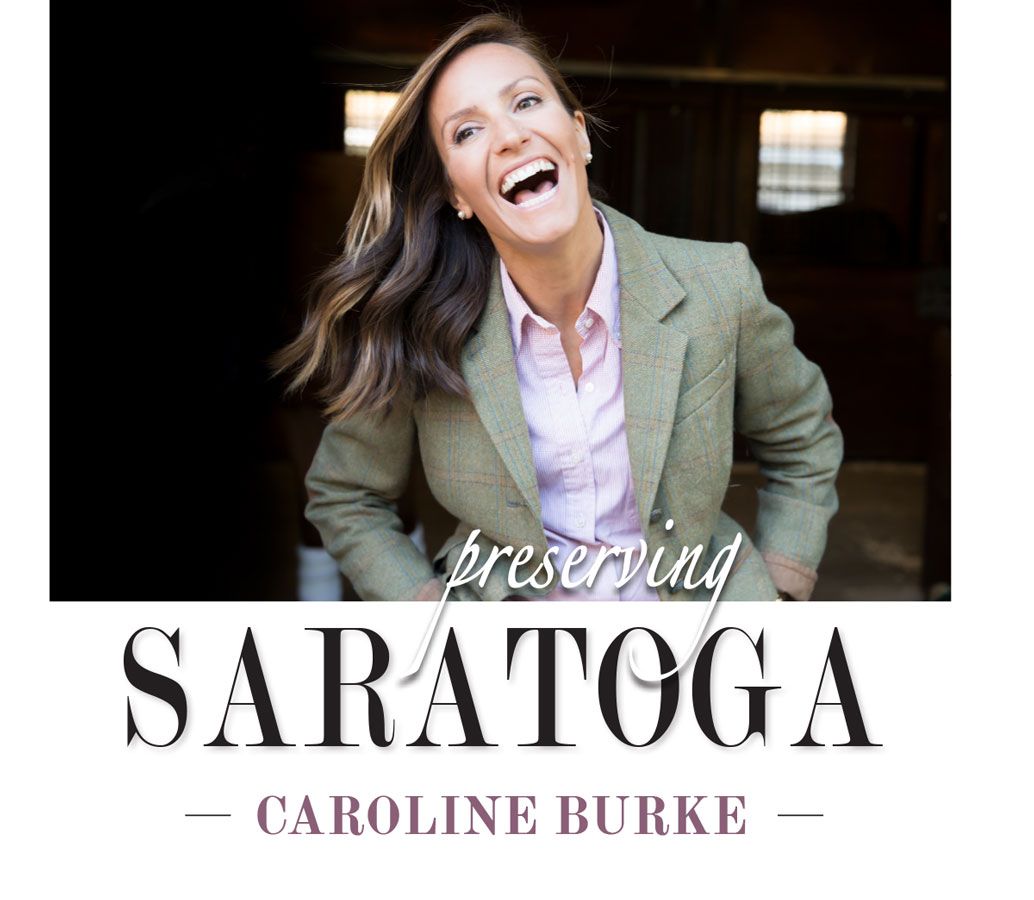
WRITTEN by samantha bosshart, Saratoga springs Preservation Foundation
Photos by Elizabeth Haynes Photography (Unless Noted)
[From the 2025 Spring Magazine]
From a young age, Caroline Burke has always been enamored with historic buildings and their interiors. Growing up in Gloucester, Massachusetts, her favorite place to visit was Beauport, the 1907 Sleeper McCann House, where children could visit for free. Caroline regularly explored the mansion overlooking Gloucester Harbor alone. She was intrigued by the forty rooms designed by Henry Davis Sleeper, one of the United States’ first professional interior designers. Each room of Beauport is uniquely distinguished by a historical or literary figure, theme, color, shape, or object. She also loved to visit the Isabella Stewart Gardner Museum in Boston, not so much for its art collection but for its architecture and interiors. In high school, rather than working in a restaurant or store, Caroline chose to be a tour guide at the Cape Ann Museum, where galleries and art spaces were in historic buildings. So, it should be no surprise that she ultimately became an interior designer who has an affinity for historic buildings.
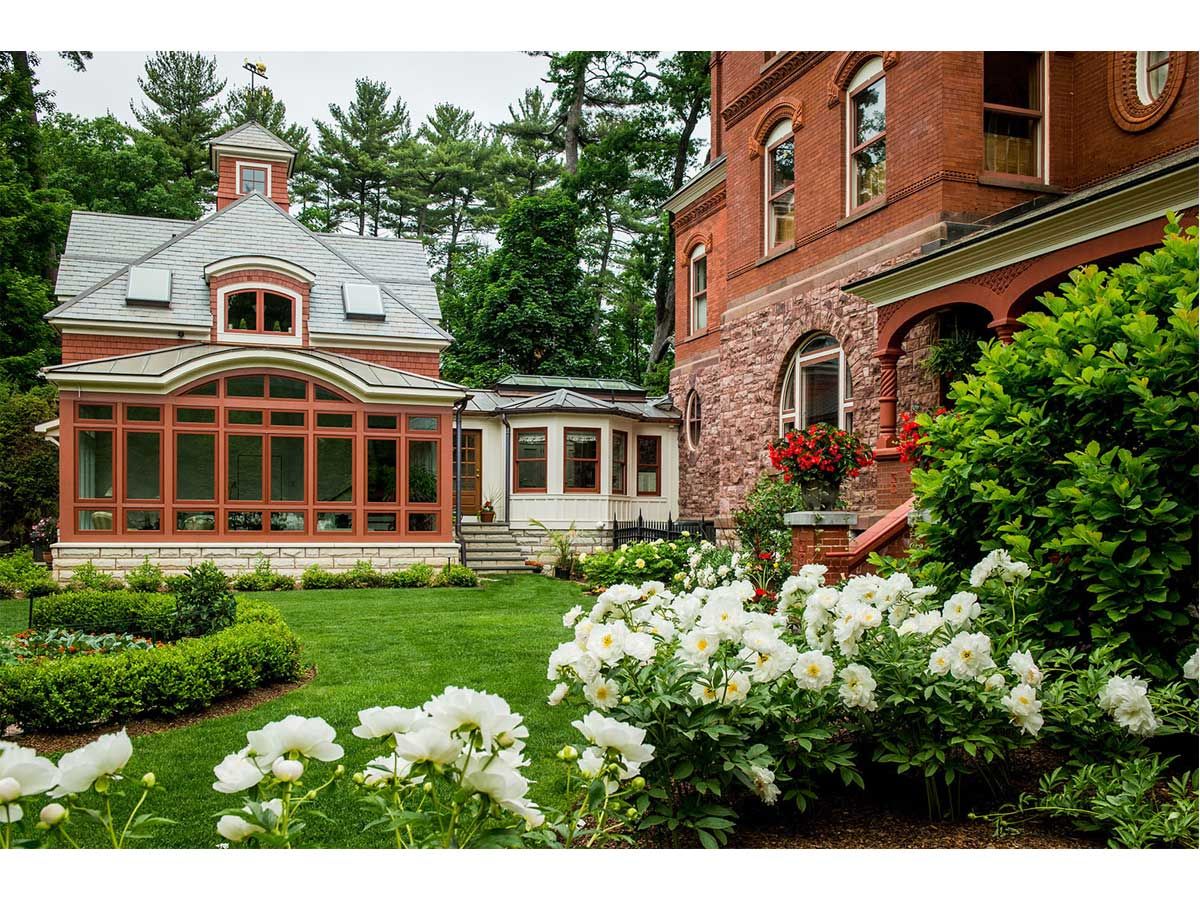
However, interior design is not what first brought Caroline to Saratoga Springs. She moved to Saratoga Springs to study English at Skidmore College. While at Skidmore, she took Professor James Kettlewell’s “History of American Interiors” and “History of American Architecture” courses, continuing her interests in interior design and architecture. It was on the polo field that she met her husband, Stowe Burke, who lived in a small cottage on a 110-acre property in Saratoga Springs that had been in his family for decades.
After graduating with a degree in English and a minor in art history, Caroline took a job with a local publishing company, where she was responsible for managing production details. She soon found that she yearned for a more creative career and decided to seek a master’s degree in interior design from the University of Florida's College of Design, Construction, and Planning while Stowe attended veterinary school at Tufts University. After graduating, Stowe, coming from a family with a rich equine history, took a job in Ocala, Florida, where he began his equine veterinary career in earnest.
For more than a decade, the small cottage in Saratoga Springs remained Caroline and Stowe’s home base, regularly returning for racing season. Prior to receiving her graduate degree, Caroline worked for a summer at Phinney Design Group, a multi-disciplinary architecture, interior design, and green building consulting firm based in Saratoga Springs. When she returned to Florida, she continued to work remotely for Phinney Design Group, where she had her first opportunity to work on a significant historic property, the Mohonk Mountain House in New Paltz, New York. “It was such an honor to contribute to a place like that,” Caroline shared.
Wanting to provide design, architectural drafting, project management, and decorating services all in one entity, Caroline ventured off on her own and formed Top Rail Interiors in 2011. Three years later, Caroline, Stowe, and their two children, Minnie and Henry, returned to Stowe’s family property in Saratoga Springs full-time. It was that same year that Stowe opened Burke Equine, where he works with the nation’s top trainers’ horses, providing veterinary services, post-surgery care, and conditioning.
Since Caroline’s return to Saratoga Springs, she has worked on a variety of projects. “When I work with clients who own historic properties, I make every effort to honor the property and do what is right for the house,” Caroline responded when asked about her design approach.
However, interior design is not what first brought Caroline to Saratoga Springs. She moved to Saratoga Springs to study English at Skidmore College. While at Skidmore, she took Professor James Kettlewell’s “History of American Interiors” and “History of American Architecture” courses, continuing her interests in interior design and architecture. It was on the polo field that she met her husband, Stowe Burke, who lived in a small cottage on a 110-acre property in Saratoga Springs that had been in his family for decades.
After graduating with a degree in English and a minor in art history, Caroline took a job with a local publishing company, where she was responsible for managing production details. She soon found that she yearned for a more creative career and decided to seek a master’s degree in interior design from the University of Florida's College of Design, Construction, and Planning while Stowe attended veterinary school at Tufts University. After graduating, Stowe, coming from a family with a rich equine history, took a job in Ocala, Florida, where he began his equine veterinary career in earnest.
For more than a decade, the small cottage in Saratoga Springs remained Caroline and Stowe’s home base, regularly returning for racing season. Prior to receiving her graduate degree, Caroline worked for a summer at Phinney Design Group, a multi-disciplinary architecture, interior design, and green building consulting firm based in Saratoga Springs. When she returned to Florida, she continued to work remotely for Phinney Design Group, where she had her first opportunity to work on a significant historic property, the Mohonk Mountain House in New Paltz, New York. “It was such an honor to contribute to a place like that,” Caroline shared.
That can be seen in her work at 795 North Broadway, 1886 Red Stone Villa. “It truly was a full circle moment to have the special opportunity to work on one of the mansions on North Broadway that I had so long admired as a Skidmore student,” she shared. “After visiting and being inspired by Edith Wharton’s fabled home, The Mount, in Lenox, Massachusetts, I collaborated with the homeowners to create interiors at Red Stone Villa which both embraced the needs of modern living and honored the architectural history of the property,” Caroline continued. This is reflected in careful decoration of the main house as well as the planning and detailing of the newly constructed carriage house designed by Frost Hurff Architects. “The owners and I wanted a sense of cohesion between the original home and the carriage house, so the same quality of detail and material were used throughout the project,” said Caroline. Since that time, she has worked on several other beautiful homes on North Broadway.
Caroline also did work at 214 Woodlawn Avenue, the former carriage house of 687 North Broadway, the 1903 Henry S. Ludlow House. “It was great to be able to do interior design work in a carriage house that local retired architect Tom Frost took such care to retain and creatively incorporate many of the original features, such as original stable doors and ironwork, when transforming it into a single-family residence in 1988. His approach is similar to my approach when doing a project in a historic building, creatively incorporating original historic details,” commented Caroline.
Wanting to provide design, architectural drafting, project management, and decorating services all in one entity, Caroline ventured off on her own and formed Top Rail Interiors in 2011. Three years later, Caroline, Stowe, and their two children, Minnie and Henry, returned to Stowe’s family property in Saratoga Springs full-time. It was that same year that Stowe opened Burke Equine, where he works with the nation’s top trainers’ horses, providing veterinary services, post-surgery care, and conditioning.
Since Caroline’s return to Saratoga Springs, she has worked on a variety of projects. “When I work with clients who own historic properties, I make every effort to honor the property and do what is right for the house,” Caroline responded when asked about her design approach.


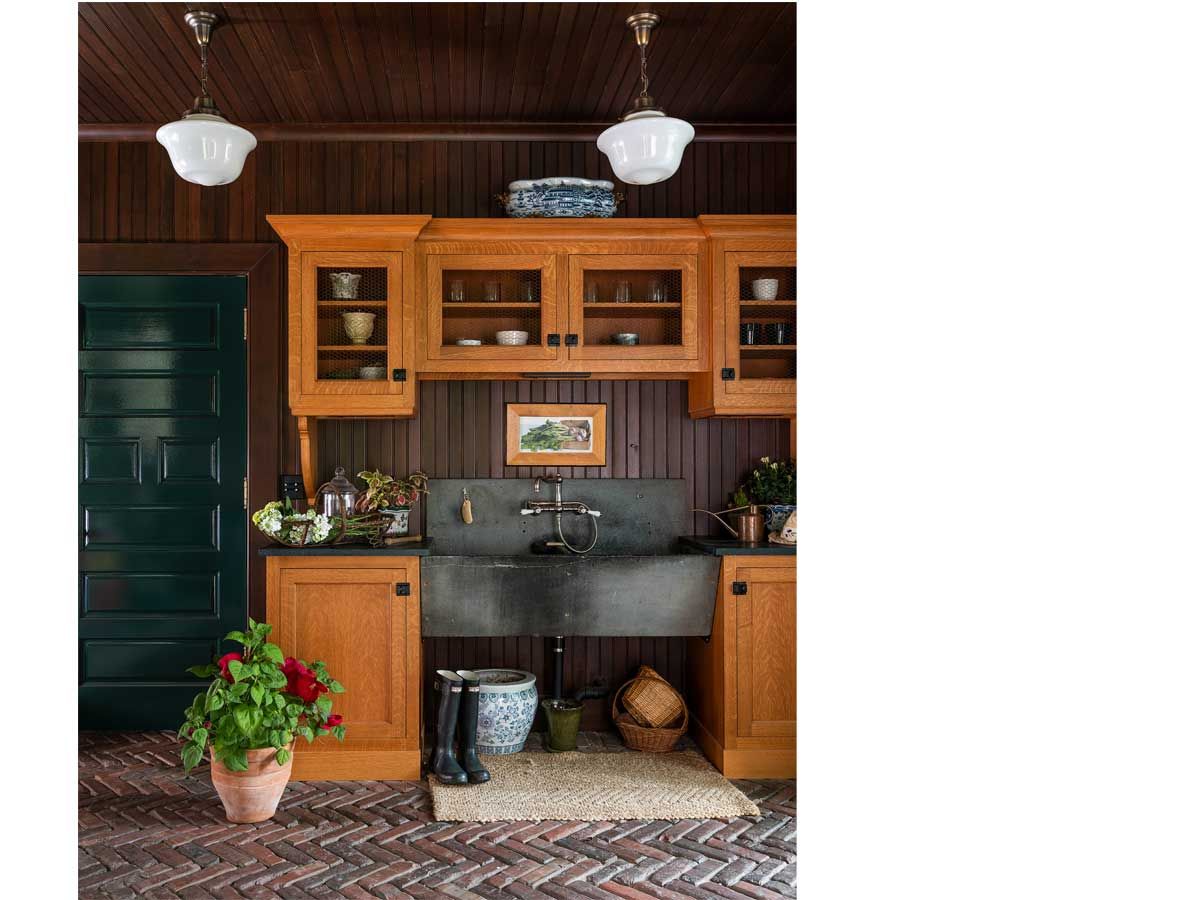
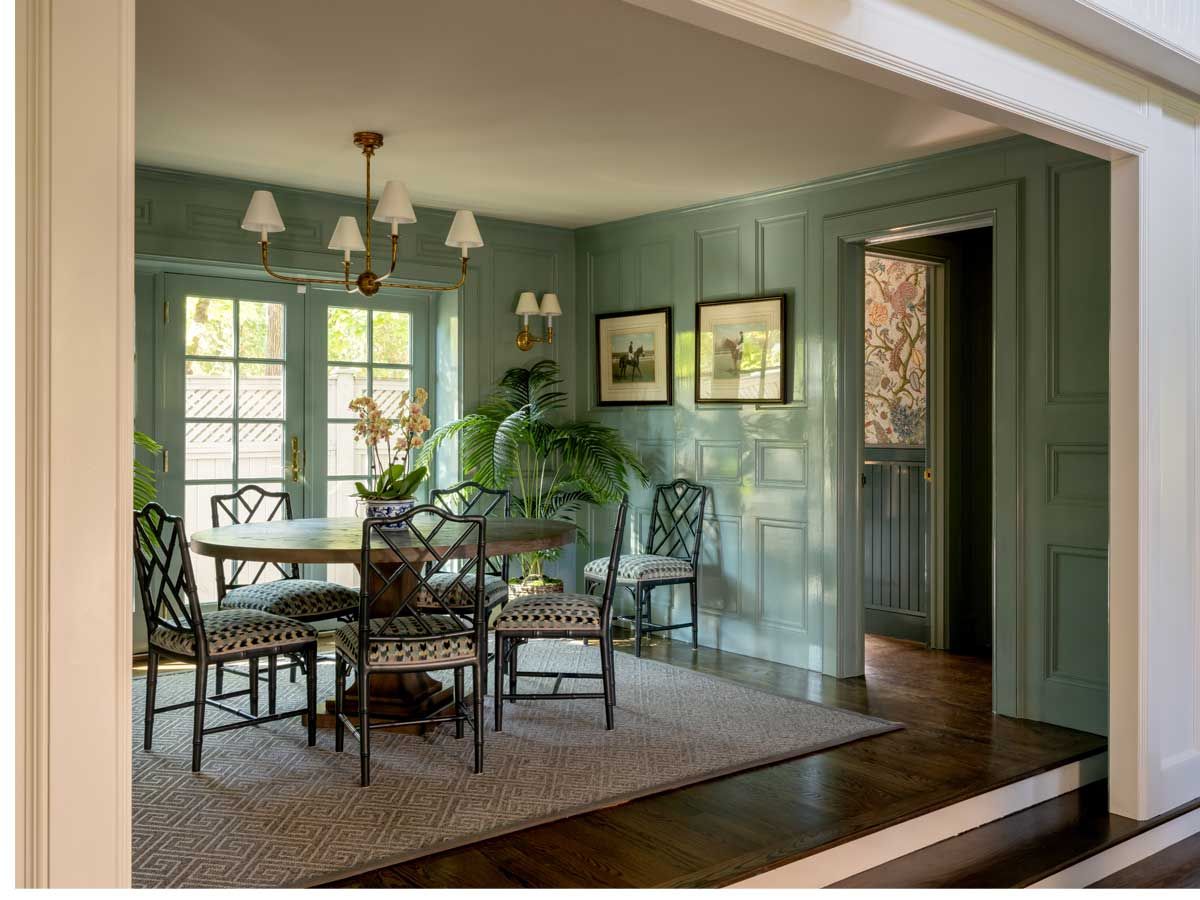

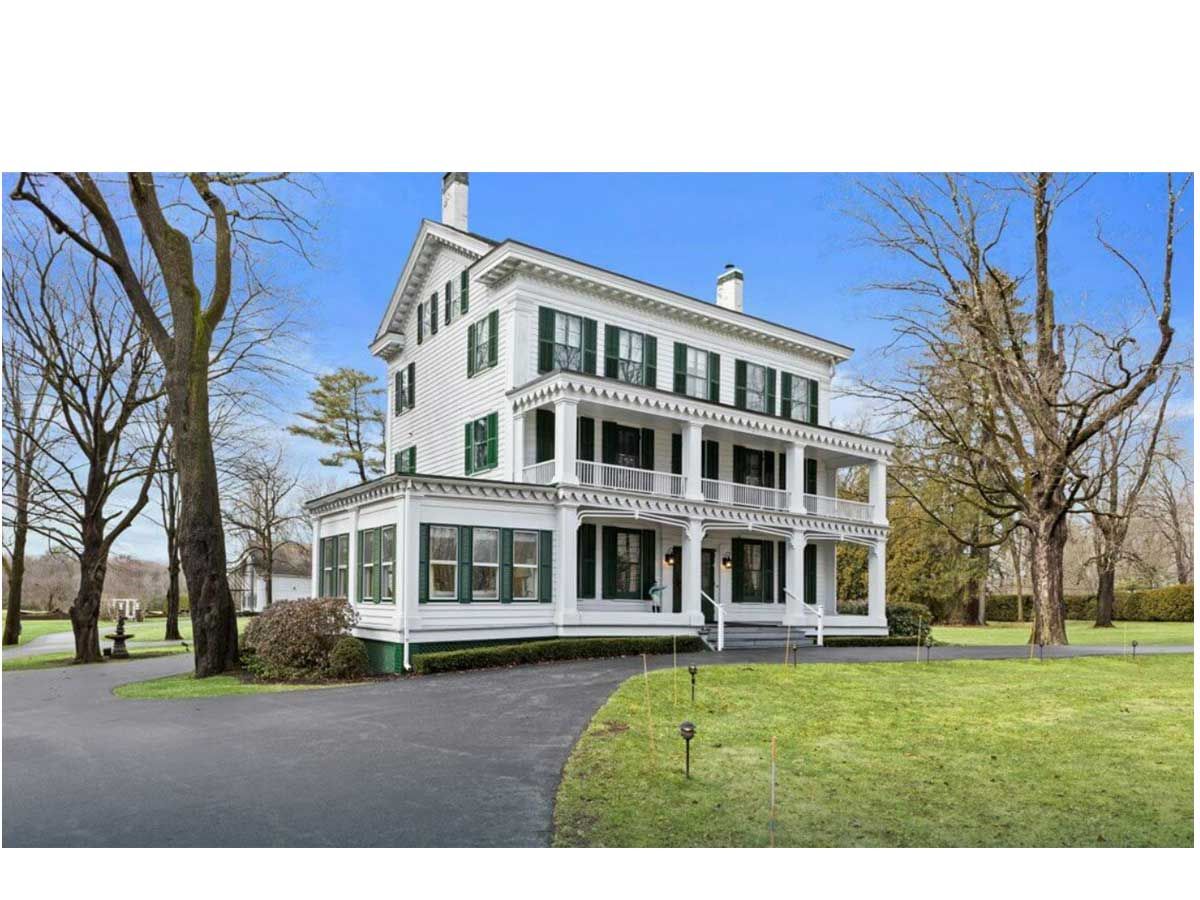
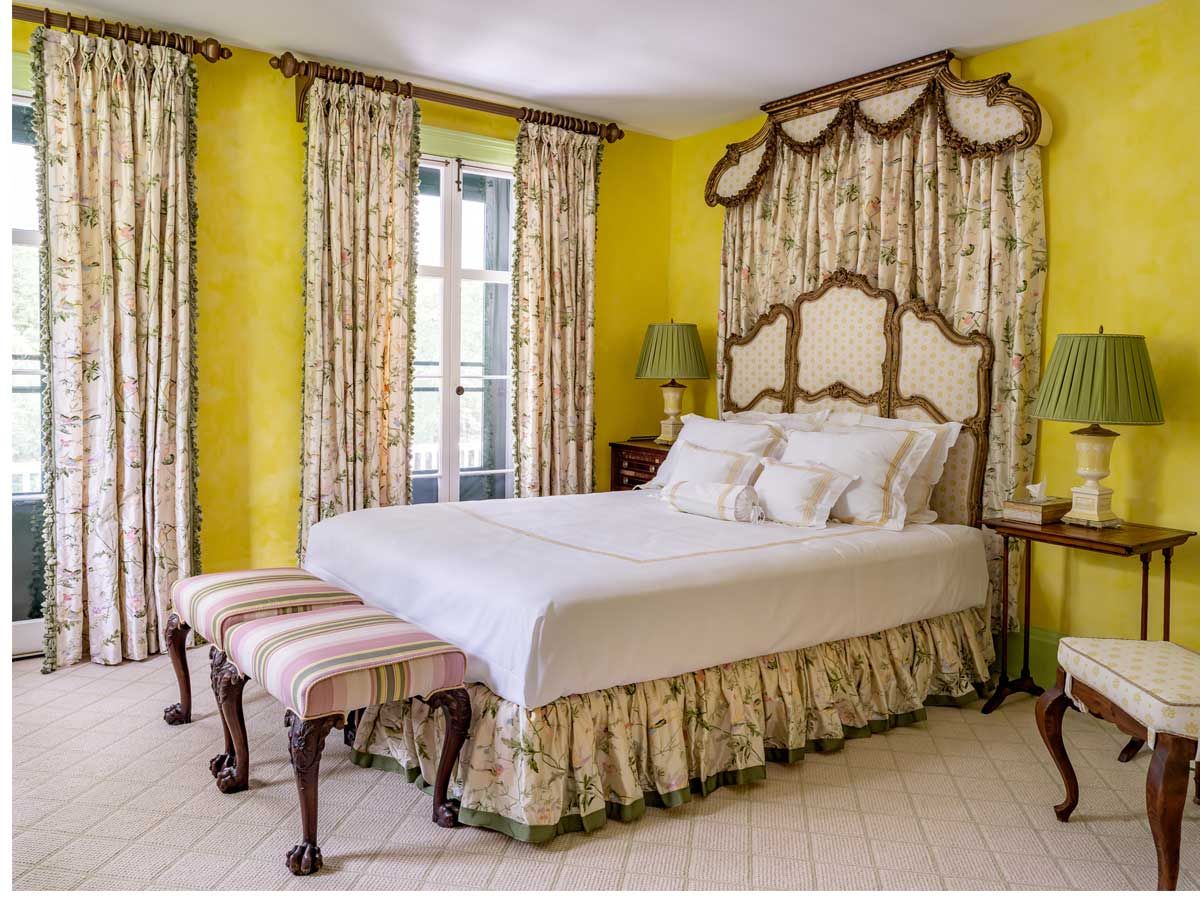
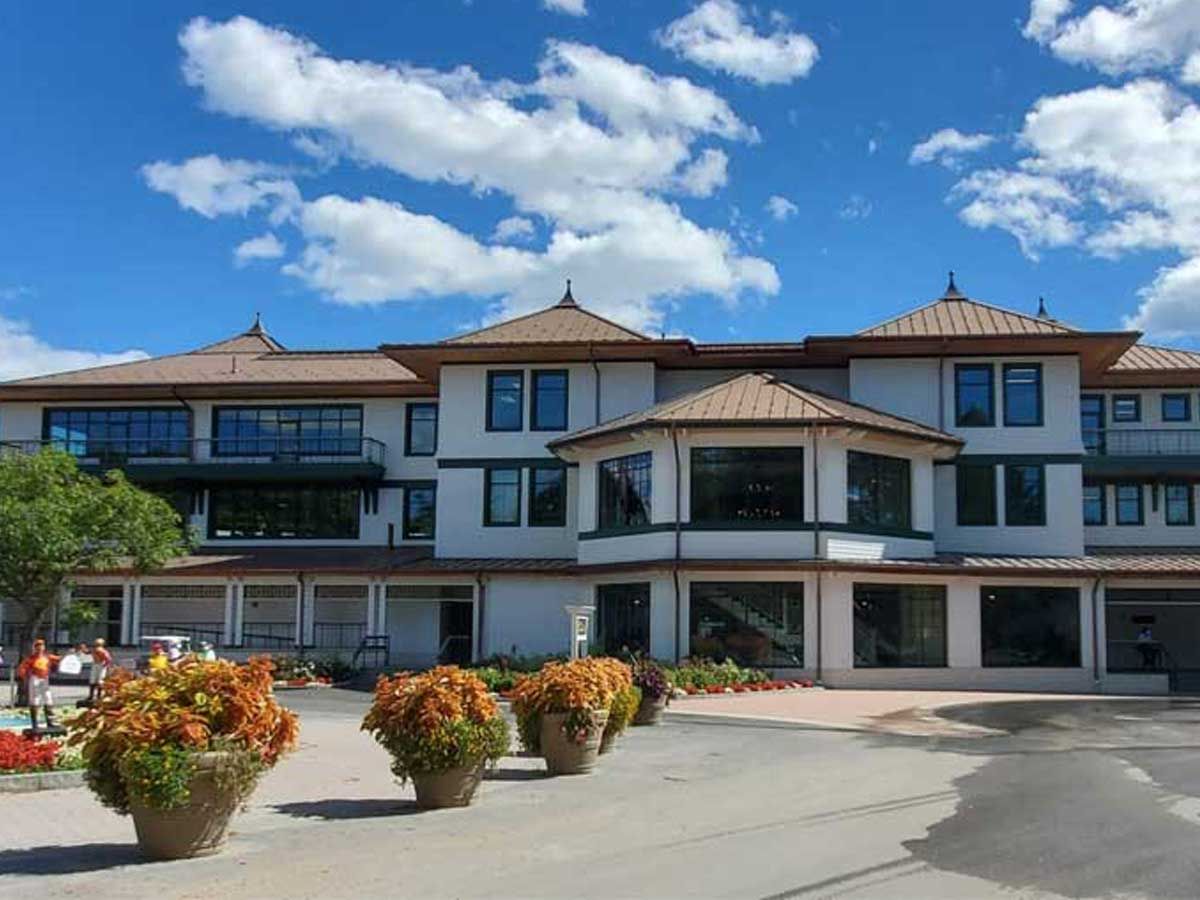
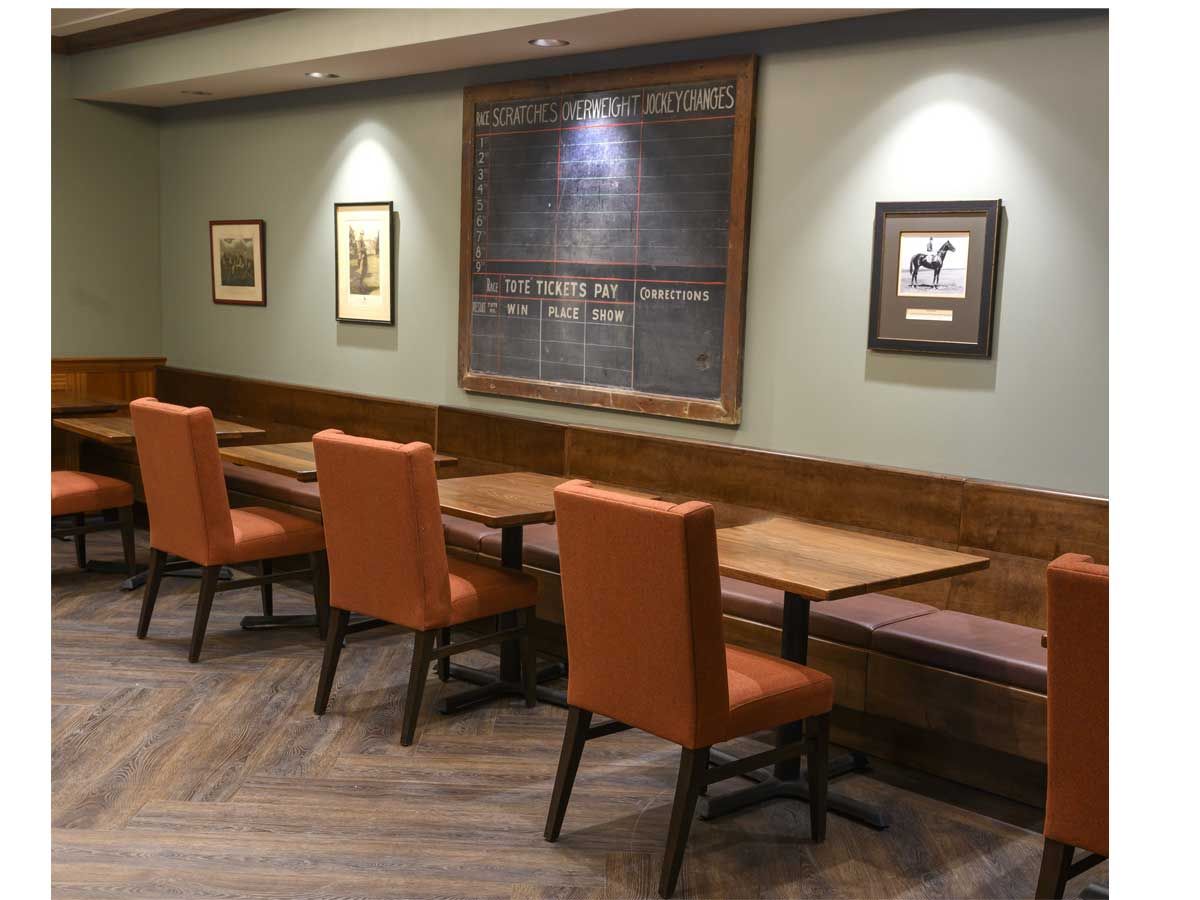
Recently, she did interior design work at Cady Hill, which has an air of secrecy for so many. “It was exciting to walk into the home of Marylou Whitney for the first time, especially as a fan of horse racing,” shared Caroline. Following Marylou’s death, her husband John Hendrickson wanted to update several rooms in the house. “When making changes it was important to John, and me, to respect the house and Marylou’s legacy,” she continued.
Caroline also has had the opportunity to complete several different projects at Saratoga Race Course. Prior to attending Skidmore College, the only race course she had visited was Rockingham Park in New Hampshire. When Stowe took her to Saratoga Race Course for the first time when attending Skidmore, she knew it was “special.” “I have always been a fan of racing and horses, so to experience the sport at such a beautiful, venerable property was thrilling,” said Caroline. Decades later, she was fortunate to be the interior designer for The 1863 Club, Post Bar, and the former Horsemen’s Lounge. At The 1863 Club, she made a point to showcase many historic artifacts that had been in storage for decades, blending the new with old. “I think it is important for the New York Racing Association to continue to retain the historic character that gives most people the sense of awe when they first visit, making them lifelong racing fans,” said Caroline.
When asked about the importance of preserving Saratoga Springs, Caroline responded,
I recognize that historic properties have value and provide a unique sense of place. Without those properties, places can be Anywhere, USA. Visitors and my seasonal clients who have second homes in Saratoga Springs, appreciate our city because of its architecture and history, not because of new, generic five-and six-story, mixed-use buildings. It is important that Saratoga Springs is preserved and protected.
Recognizing that, she served on the board of directors of the Saratoga Springs Preservation Foundation from 2016 - 2020. “The Foundation plays such an important role in preserving our community, including the Saratoga Race Course, through advocacy, educational programs, technical assistance, and restoration projects. However, many do not realize that their role is only advisory, and it is the city’s zoning ordinance and the land use review boards that ultimately determine the future of Saratoga Springs,” shared Caroline. She continued, “Developers are hungry to monetize every square foot of our gorgeous city. Without mindful zoning and preservation policies, we run the risk of losing the charm and history that makes Saratoga Springs so unique.”
To support the Saratoga Springs Preservation Foundation’s efforts to preserve and enhance the architectural, cultural, and landscaped heritage of Saratoga Springs and have the rare opportunity to see Caroline's interior design at 795 North Broadway and 214 Woodlawn Avenue, attend the upcoming Historic Home Tour on Saturday, May 10th. To learn more and purchase tickets, please visit www.saratogapreservation.org.